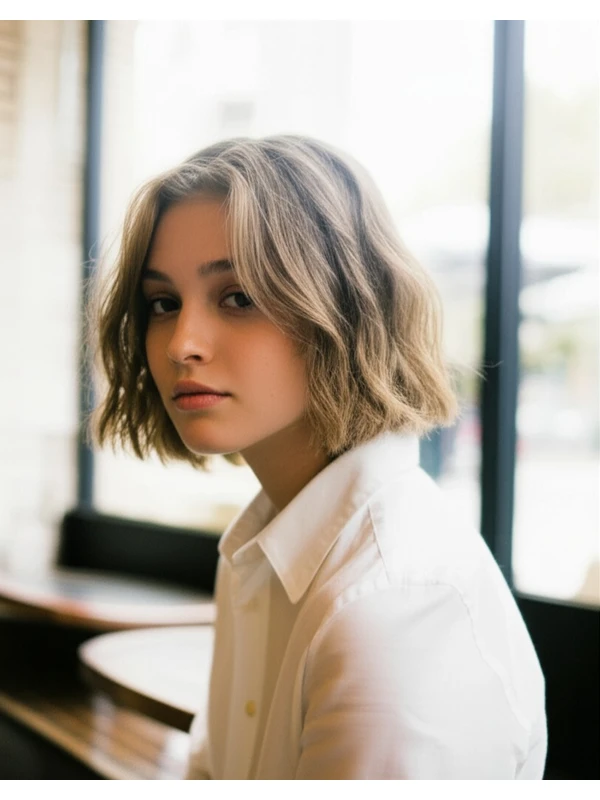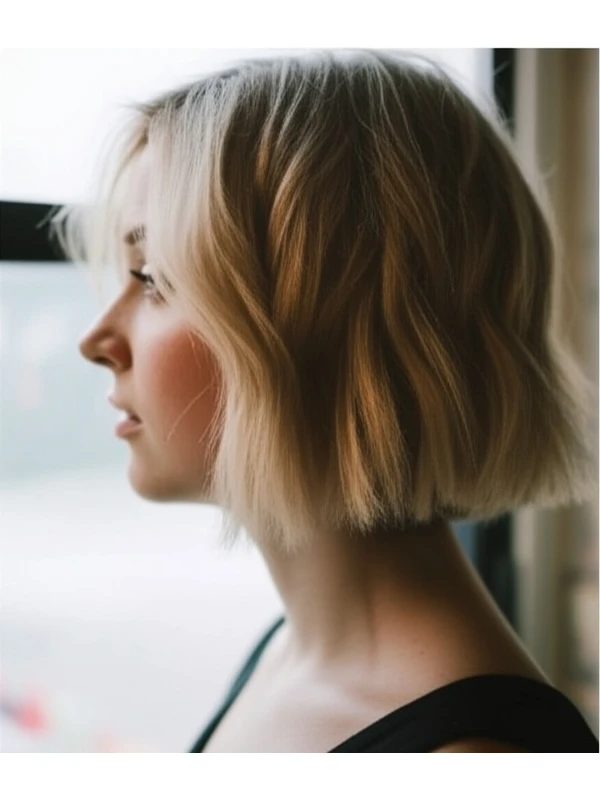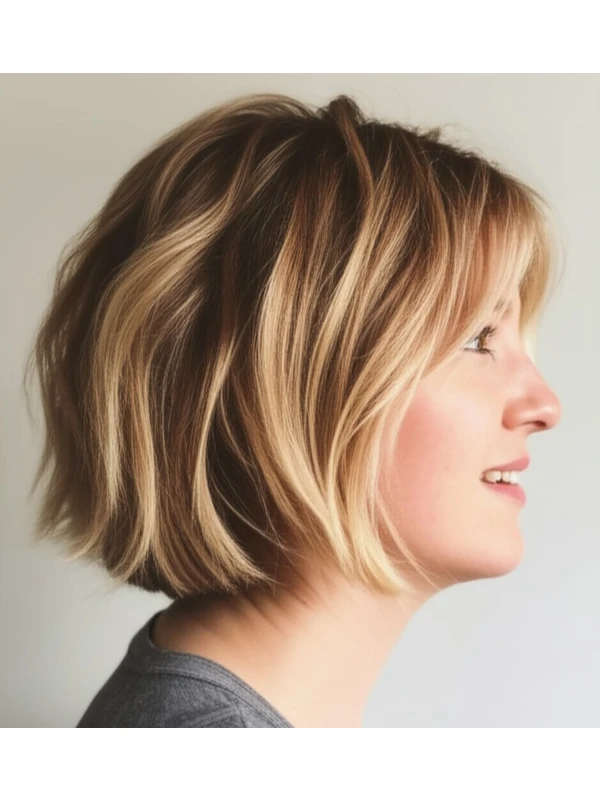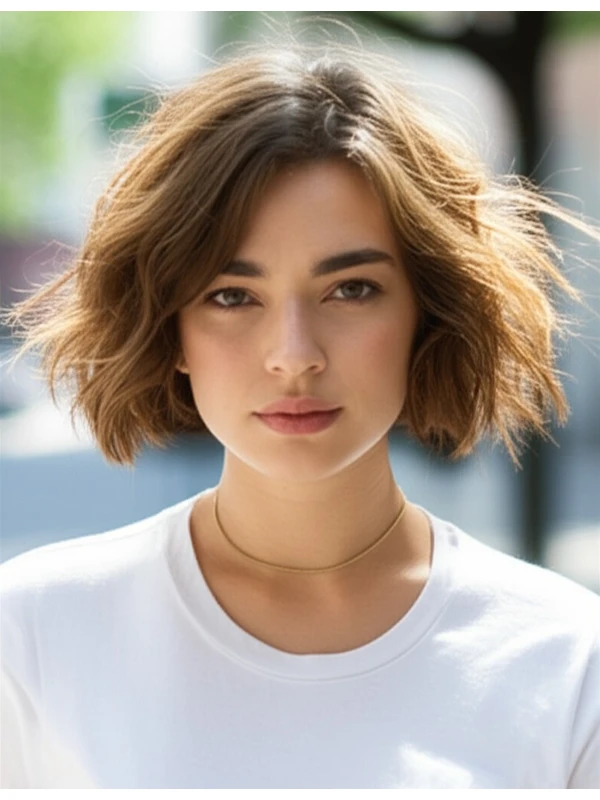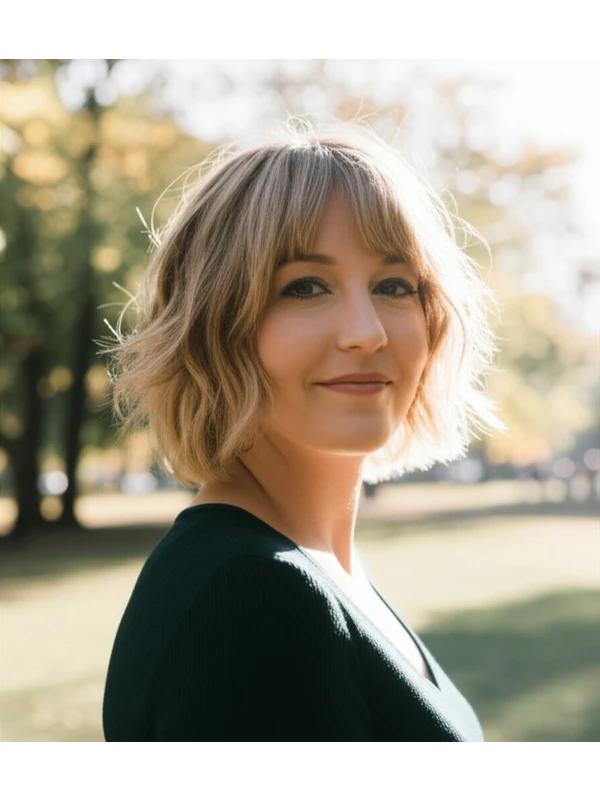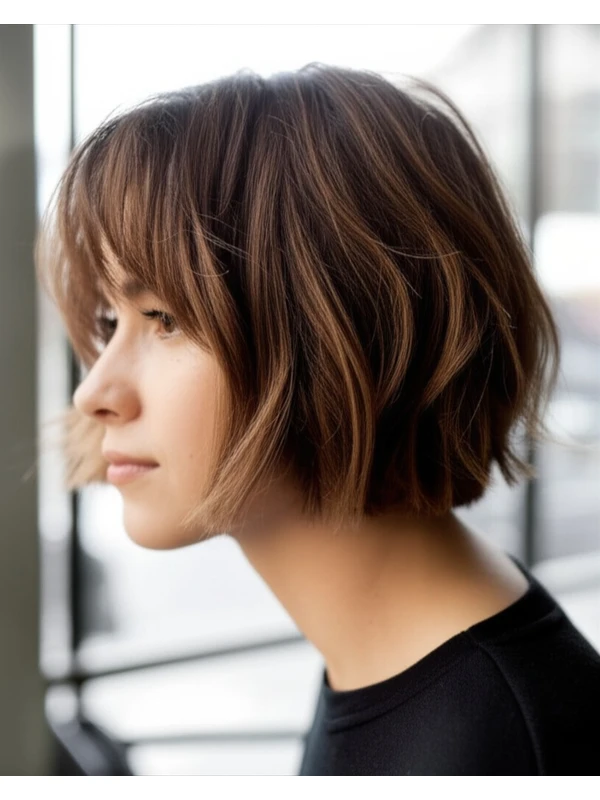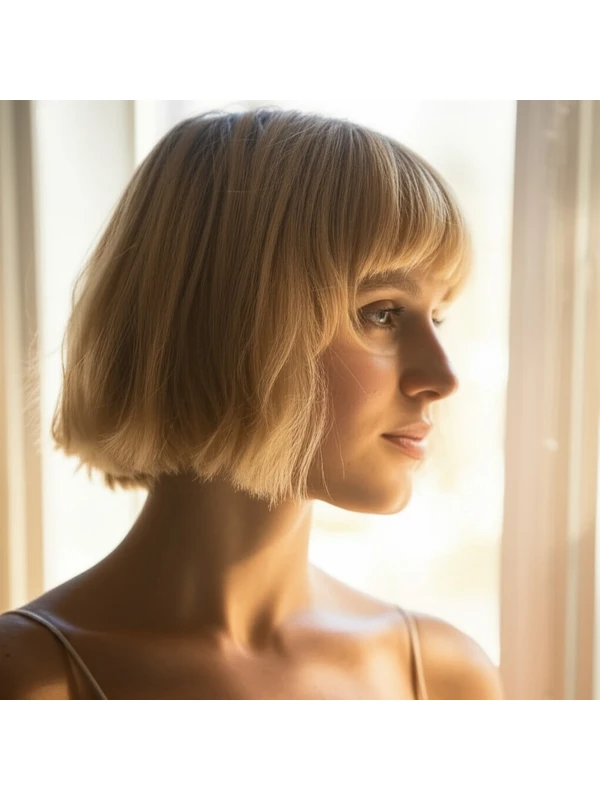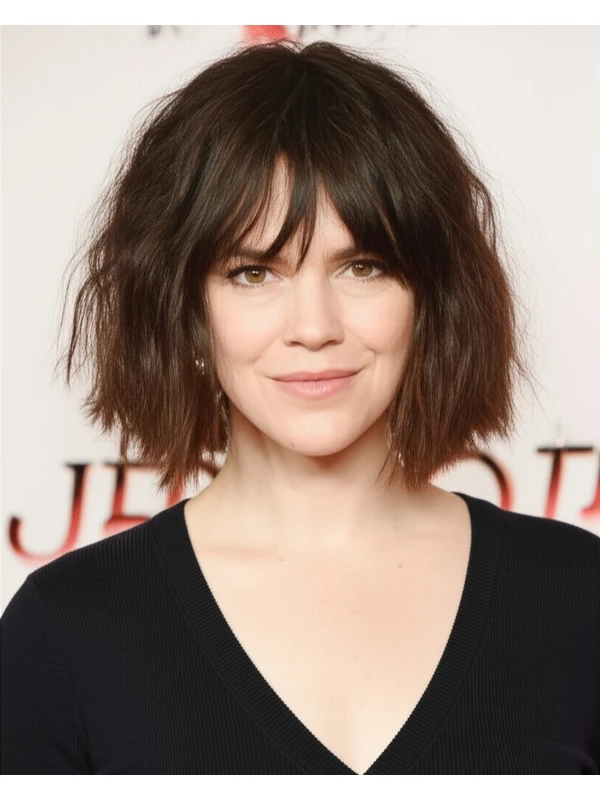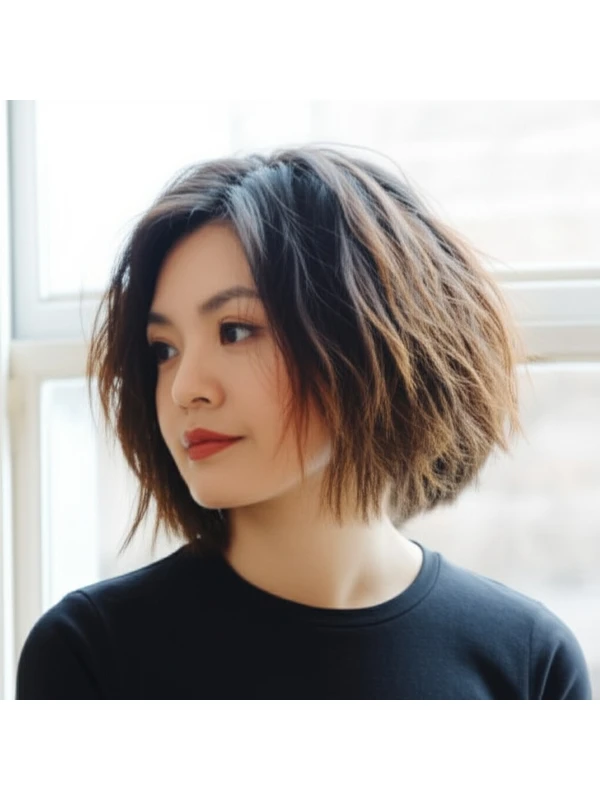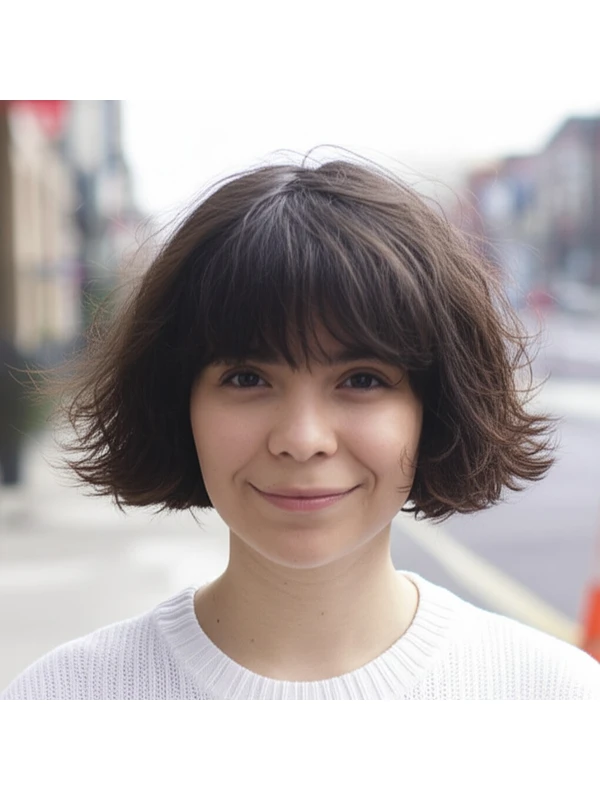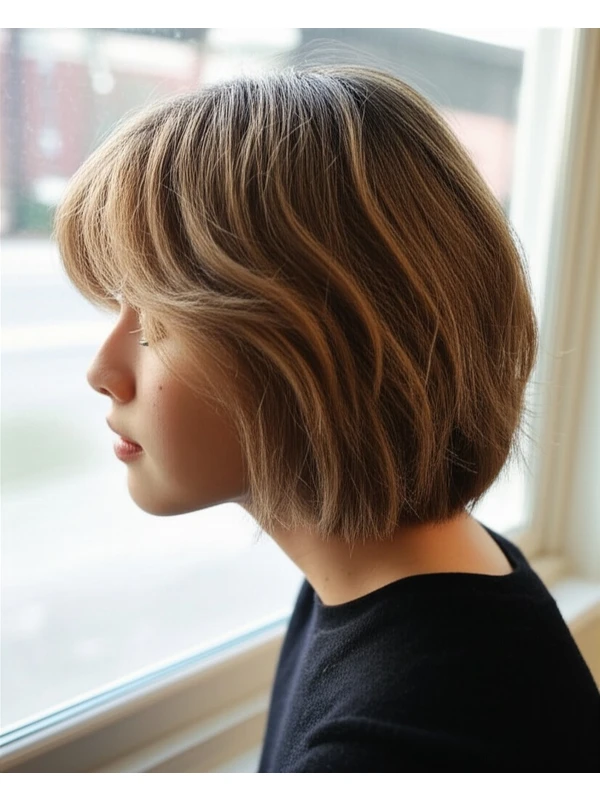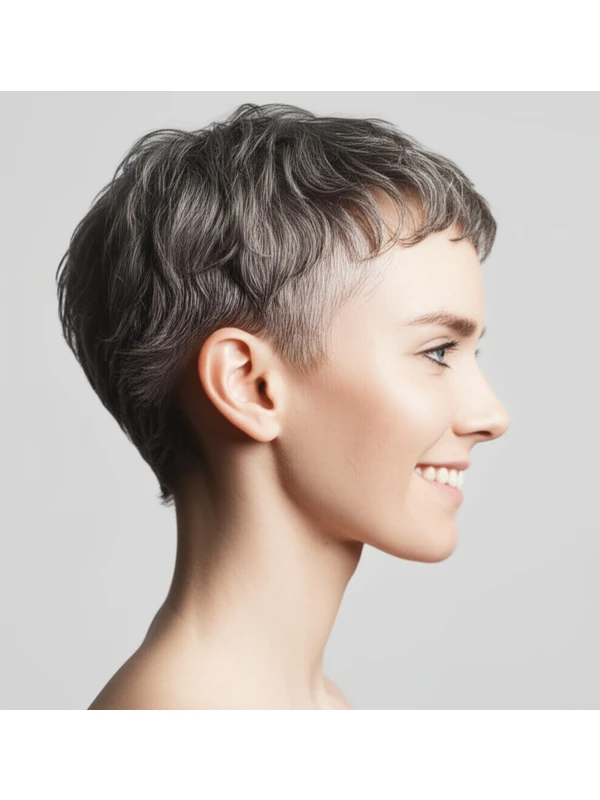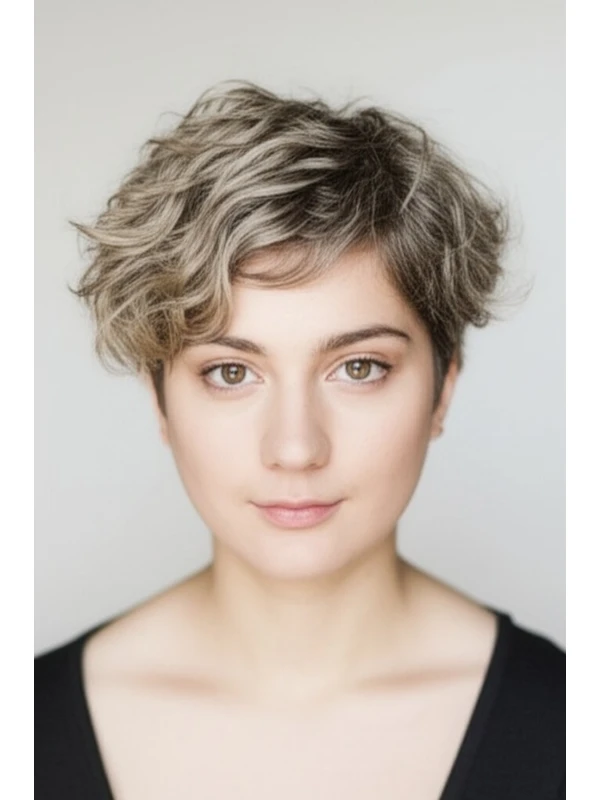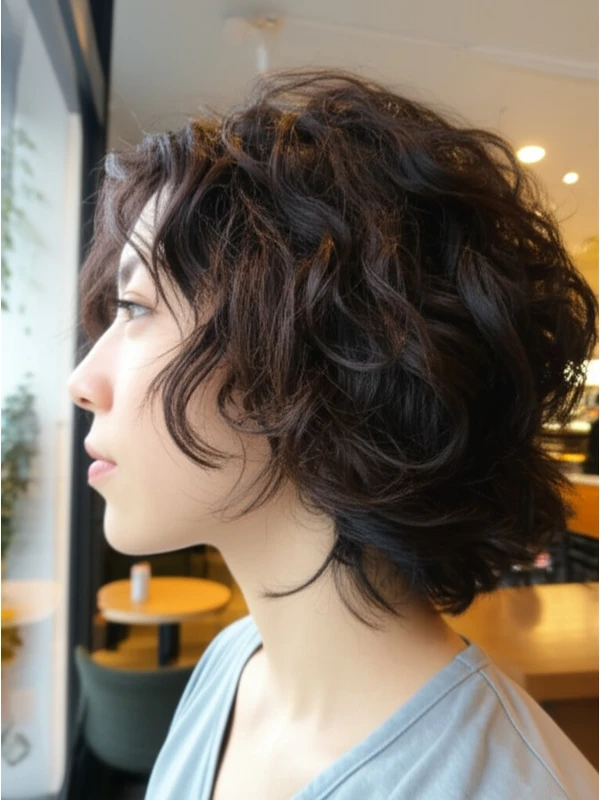#The Blunt Cut: A Modern Classic
The blunt cut is having a serious moment – and for good reason! It’s chic, modern, and surprisingly versatile. But what exactly is a blunt cut? Let's dive in to everything you need to know about this popular hairstyle.
#1. Background & Definition: What Makes it “Blunt”?
A blunt cut is characterized by its clean, straight lines at the ends of the hair – no fading or layering! Think of it like a perfectly even rectangle when looking at the bottom edge. It creates a strong, solid shape and emphasizes thickness.
- Geometry: The defining feature is the lack of graduation; all strands are cut to roughly the same length at the hemline.
- Key Features: Sharp lines, defined ends, visual weight at the bottom, often appears thicker than it actually is.
- Typical Length Ranges: Blunt cuts work beautifully from chin-length bobs to collarbone lengths and beyond. They can even be done on longer hair, though layering becomes more common with greater length.
- Alternative Names: Sometimes called a "one-length cut" or simply a “straight across” cut.
#2. Face Shape Fit: Finding Your Perfect Angle
The blunt cut's strong lines can beautifully balance different face shapes. Here’s how it works for you:
- Oval Faces: Lucky you! Almost any length of blunt cut will flatter an oval face. A chin-length bob or a longer lob (long bob) are both excellent choices. Fringe Option: A straight, eyebrow-grazing fringe adds even more structure.
- Round Faces: The bluntness creates angles that slim the face. Opt for a jaw-length to collarbone length cut. Avoid cuts that end right at your cheeks as this can accentuate roundness. Fringe Option: A wispy or side-swept fringe softens the look and adds asymmetry, which is flattering.
- Square Faces: The blunt edge softens the angularity of a square face. A lob or longer style works well. Avoid very short blunt cuts that might emphasize the jawline too much. Fringe Option: A soft, textured fringe can help break up harsh angles.
- Heart-Shaped Faces: The blunt cut balances out a wider forehead and pointed chin. Chin to collarbone length is ideal. Fringe Option: A side-swept fringe helps create balance.
- Diamond Faces: Similar to heart shapes, the blunt cut softens angles. A lob or longer style works beautifully. Fringe Option: A full, straight fringe can add width to a narrower forehead.
- Oblong (Long) Faces: The bluntness adds width and makes the face appear more balanced. Opt for shorter lengths – chin-length to collarbone length – to avoid elongating the face further. Fringe Option: A blunt, full fringe is your best bet!
#3. Body Proportions & Height Guidance: Tailoring Your Silhouette
Your body shape and height influence how a blunt cut looks on you.
- Petite (Under 5'4"): Shorter blunt cuts (chin to collarbone) are generally more flattering, as longer lengths can overwhelm a smaller frame.
- Average Height (5’4” - 5’8”): Most lengths work well! Experiment with different styles.
- Tall (Over 5'8"): Longer blunt cuts (collarbone to shoulder length or beyond) help balance your height and create a more proportional look.
- Narrow Shoulders: A blunt cut at the shoulders adds visual width, balancing narrowness. Adding subtle layers without losing the overall blunt effect can also add volume at the sides.
- Broad Shoulders: A slightly longer blunt cut (collarbone length or beyond) helps to soften broad shoulders and create a more elongated silhouette.
- Short Neck: Shorter, chin-length cuts are generally best as they don't emphasize a shorter neck. Avoid very long styles that can make your neck appear even shorter.
- Long Neck: A blunt cut at the collarbone or longer helps to visually shorten the neck.
#4. Works Best With Hair Types & Densities: Finding Your Match
The versatility of the blunt cut extends across hair types and densities, but adjustments are often needed!
- Straight Hair: The blunt cut shines on straight hair, showcasing its clean lines and creating a polished look.
- Wavy Hair: A blunt cut can enhance natural waves, providing definition and body. Be mindful of potential bulkiness; point-cutting the ends (removing tiny pieces) can soften the line.
- Curly/Coily Hair: A blunt cut works well to define curls or coils, but shrinkage is a major factor! A stylist needs to account for this when cutting dry – expect your hair to spring up considerably after washing. Shorter lengths are often preferable to avoid excessive bulk and weight.
- Fine Hair: The bluntness creates the illusion of thickness. A shorter length (chin-length or lob) is ideal to prevent a stringy appearance.
- Medium Hair: A versatile choice for most lengths!
- Thick Hair: A blunt cut can help manage volume, but be prepared for potential heaviness. Layering very subtly can alleviate this.
- Density Tips: For very dense hair, thinning shears may be used sparingly to remove some weight without sacrificing the overall bluntness.
#5. Styling Variations: From Sleek to Textured
The beauty of a blunt cut is its adaptability!
- Sleek vs. Textured: A sleek style uses smoothing products and heat styling for a polished look. Texturizing sprays or sea salt sprays create undone, beachy vibes.
- Middle vs. Side Part: A middle part emphasizes symmetry and structure. A side part adds softness and movement.
- Fringe Variations: Straight, wispy, side-swept – the possibilities are endless!
- Occasion Styling:
- Casual: Air-dried with a texturizing product.
- Office: Sleeked back or styled with a slight bend using heat styling tools.
- Evening: Add volume at the roots and use shine serum for an extra glamorous look.
#6. Maintenance: Keeping That Sharp Edge
- Trim Cadence: Every 6-8 weeks is typical to maintain the blunt line. Curly/coily hair may need trims every 4-6 weeks due to shrinkage.
- At-Home Routine: Gentle shampoo and conditioner are key. Avoid harsh sulfates that can dry out your ends.
- Heat vs Air Dry: Air drying is healthier, but heat styling allows for more control over the shape. Use a heat protectant if using hot tools!
- Product Checklist:
- Shampoo & Conditioner (sulfate-free recommended)
- Leave-in Conditioner (especially important for dry or curly hair)
- Smoothing Serum/Oil (for sleek styles)
- Texturizing Spray/Sea Salt Spray (for textured styles)
- Heat Protectant (if using hot tools)
- Estimated Daily Styling Time: 5-15 minutes, depending on desired style.
#7. Grow-Out Roadmap: The Evolution of a Blunt Cut
- Months 1-3: The shape is at its most defined and impactful.
- Months 3-6: The blunt line begins to soften as new growth emerges. Subtle layering may be added to maintain shape and prevent the hair from looking boxy.
- Maintenance: Regular trims are crucial during this phase to keep the style looking intentional, not just grown out.
#8. Color Pairings: Enhancing Your Blunt Cut
- Cool Undertones (pink, blue): Icy blondes, ash browns, and cool-toned reds look stunning against a blunt cut.
- Warm Undertones (gold, yellow): Honey blondes, caramel browns, and copper tones create warmth and dimension.
- Low-Commitment Options: Balayage or babylights add subtle brightness without a harsh root line.
#9. Season & Occasion Guide: Styling for Every Moment
- Spring/Summer: Lightweight styling products, air drying, and beachy waves are perfect for warmer weather.
- Fall/Winter: Add richness with deeper tones and embrace sleek, polished styles.
- Work: Classic and professional – a sleek, straight style is ideal.
- Weddings/Parties: Add volume at the roots and use shine serum to create an elegant look.
#10. Cost & Time: Salon Expectations
- Salon Time: Typically 45-90 minutes for a basic blunt cut. More complex styles (with fringe or significant color changes) may take longer.
- Price Range: Expect to pay slightly above average prices, as the precision required for a truly blunt cut often commands a premium.
#11. Pros & Cons: Weighing Your Options
Pros: Modern and chic, versatile styling options, creates the illusion of thickness, flattering on many face shapes. Cons: Requires regular trims to maintain shape, can look harsh if not styled correctly, may be too severe for some personalities.
#12. Salon Consultation Script: Questions to Ask & Be Asked
Here are prompts you can use during your consultation with your stylist:
- "I'm interested in a blunt cut. Can you assess my face shape and hair type to determine the best length and style?"
- "How will this cut work with my natural texture (wavy, curly, coily)?"
- “Can we discuss how shrinkage will affect the final length?”
- "What styling products do you recommend for maintaining this look at home?"
- "How often will I need to come in for trims?"
#FAQs: Your Blunt Cut Questions Answered
- Is a blunt cut right for thin hair? Yes! It creates the illusion of thickness, but shorter lengths are generally best.
- Will a blunt cut make my hair look flat? Not necessarily! Strategic styling and product choices can add volume and movement.
- Can I get a blunt cut with layers? Technically yes, but it’s less about layering throughout the hair and more about subtle point-cutting to soften the ends. The core principle of a blunt cut is its solid bottom line.
- How do I prevent my blunt cut from looking boxy? Communicate with your stylist! Subtle angles or face-framing pieces can add softness.
- What if I want a fringe with my blunt cut? Absolutely! A straight, wispy, or side-swept fringe can enhance the style and flatter your features.
- Is a blunt cut difficult to style? It depends on your desired look! Sleek styles require more effort than air-dried looks.

